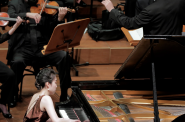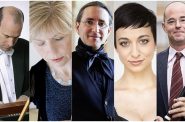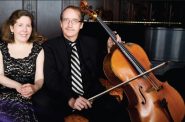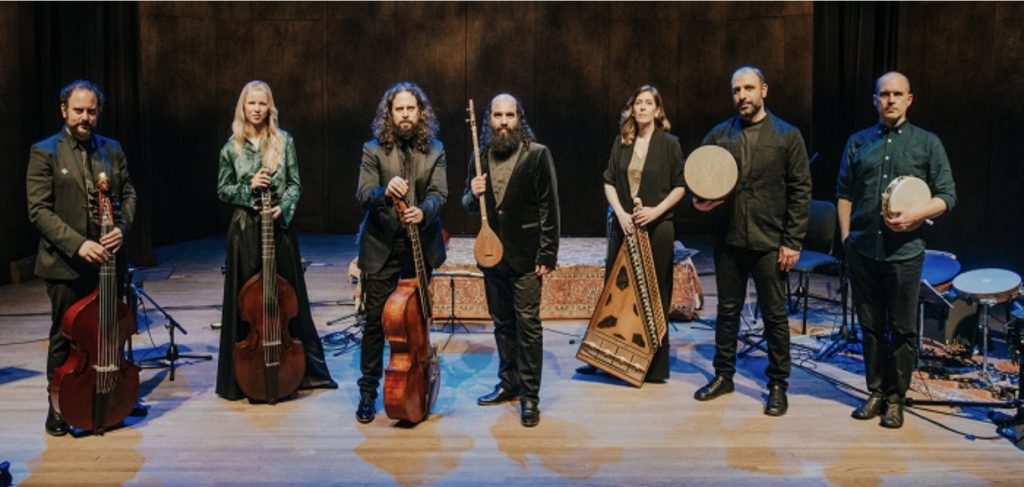Concert Blends European and Persian Music
Early Music Now presents Constantinople and Accademia del Piacere.
Early Music Now hosts Constantinople on Saturday, April 6 at the University of Wisconsin-Milwaukee. Accademia del Piacere, a trio of viola da gamba players, will join them. Constantinople, guests of Early Music Now in 2015, is dedicated to early influences of Middle Eastern music around the Mediterranean. Accademia del Piacere focuses on the music of the Renaissance era with roots in Spain. Together they will present a program entitled From Seville to Isfahan, exploring the intersection of Persian and Renaissance music in 15th and 16th century Seville.
The Constantinople ensemble features Persian instruments little known in the West. Persian music traditions were found around the Mediterranean, now centered in Istanbul as well as Isfahan. Artistic Director Kiya Tabassian plays the setar, a fretted plucked string instrument – a smaller cousin to the Indian sitar. Didem Basar plays a kanun, the most sophisticated of the family of instruments in the zither family. The kanun includes 26 sets of strings, with two or three in a set. The strings can be lengthened or shortened by raising or lowering the small latches placed under the strings. This allows the strings to be quickly re-tuned during performance to a wide variety of Arabic scales. The daf, a handheld drum, and other percussion instruments round out the ensemble. View closeups of Basar playing the Kanun in a YouTube from a Constantinople concert.
The concert will rarely remain within the comfortably familiar ambiance of austere Renaissance music. The concert intends to build a bridge between these musical cultures, recognizing that these hybrid interpretations were likely to be found in the courts and musical gatherings of Seville at this time.
Is this a historically accurate performance? Tabassian asserts that musicians of the time had the “freedom to interpret in a different way depending on the time of the day, depending on the context where they were playing, if it was a court performance or it was a house performance. We are not there to show the music from a museum perspective. We are there to share historical music but with a very personal touch and personal approach.”
Tabassian recognizes certain patterns in Spanish Renaissance music. The rhythms may not be “that complex, but when we analyze some music from those manuscripts, from Cancionora del Palacio or Cancionero Colombina from a more Sevillian time, we find still some complex sub-rhythms that are these influences from Persian Middle Eastern music, which came to Spain through the Middle Ages period.”
Tabassian continues, “It’s very important to keep the roots alive, even if you are very much inventing. I mean, it’s like a tree. A tree grows up well in a different environment if the roots are the same, and the roots are well preserved. (When bridging traditions) each culture, each instrument has to keep its own strong vocabulary.”
The concert begins at 5:00 p.m. Saturday, April 6 at the UW-Milwaukee Helene Zelazo Center for the Performing Arts at 2419 E. Kenwood Blvd. A pre-talk will begin at 4:00 p.m. Tickets may be purchased online or at the door. The sound will be great throughout the hall, but Tier One tickets ensure a closer look at the instrumentalists.
Early Music Now will close the concert season on May 18 at Saint Paul’s Episcopal Church with guest artists, the Four Nations Ensemble. The concert Crossing Borders: Italian & French Masterworks will explore the synergy between courtly French music and emotionally charged Italian music. This program showcases impassioned works by Antonio Vivaldi, François Couperin, Jean-Philippe Rameau, George Frideric Handel, and Antonio Caldara.
Preview
-
PianoArts Festival Features Rising Stars
 May 28th, 2024 by Michael Barndt
May 28th, 2024 by Michael Barndt
-
Four Nations Ensemble Goes For Baroque
 May 13th, 2024 by Michael Barndt
May 13th, 2024 by Michael Barndt
-
Mozart on Prospect Avenue
 May 9th, 2024 by Martha Brown
May 9th, 2024 by Martha Brown





















